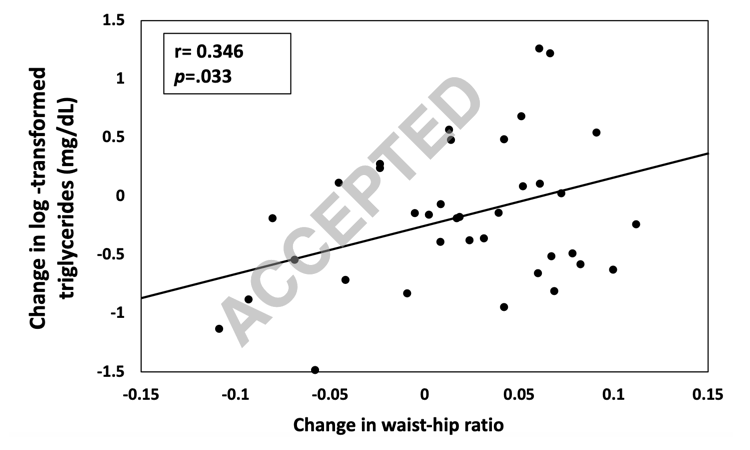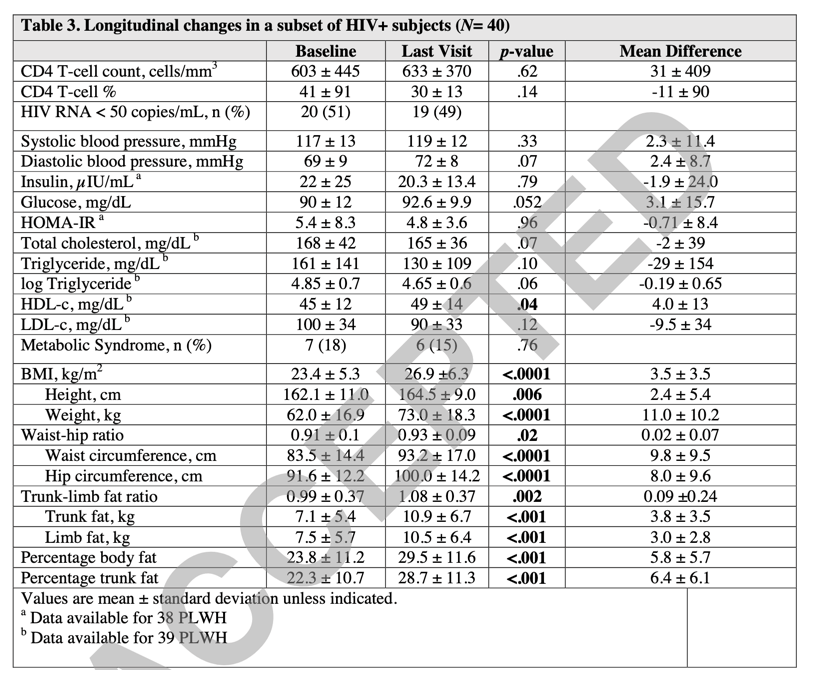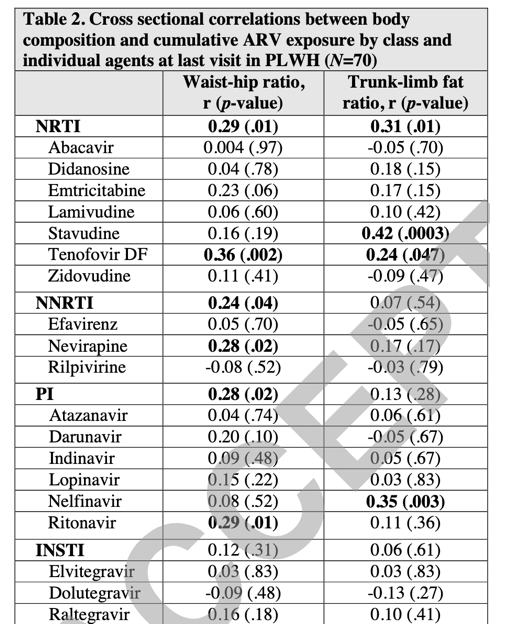| |
Body Changes for Young Adults Acquiring HIV at Early Age & Perinatally
|
| |
| |
Download the PDF here
Young adults who acquired HIV in early childhood, either perinatally or transfusion-
acquired, were enrolled and followed in prospective longitudinal cohort at NIH.
In conclusion, individuals who acquired HIV in early childhood were more likely to
demonstrate central obesity compared with those without HIV. Using DEXA scans and
anthropometrics, we measured body fat distribution over an average of 7 years. We also
identified associations between body composition and metabolic parameters as well as the
duration of exposure to certain ARVs. These findings underscore the long-term persistence and
associated risk factors of central adiposity among PLWH who have life-long ARV exposure
which may translate to increased metabolic disturbances and enhanced risk of cardiovascular
disorders in future decades.
In this natural history study, young adults who acquired HIV in early childhood
demonstrated a heightened risk for metabolic disorders compared to those without HIV.
Hyperlipidemia and insulin resistance were both strikingly common among PLWH. Body fat
distribution also tended to be central with adipose tissue accumulation preferentially in the
truncal region, relative to those without HIV. Although BMI and biomarkers for lipid and
glucose metabolism did not change significantly between baseline and last follow-up, noticeable
increases in waist-hip circumference ratio and trunk-limb fat ratio were observed and may reflect
the residual lipodystrophic effects of extensive ARV use since early childhood and adolescence.
[ from Jules: we are not surprised that young people who acquired HIV at early age develop body changes early along with metabolic abnormalities that persist & that will affect them forever. This is another “aging” group to be concerned about just like the current elderly with HIV>65 who are often suffering physical & mental impairment & disability. these young people may be destined for the same outcomes as the age. the HIV aging problem in my opinion will not go away. Its here to stay & needs to continue to be better addressed with care & research.]

JAIDS Oct 2021 - Seynt Jiro Sahagun, BA1, Teja Yeramosu, BA1, Julia B. Purdy MSN CRNP2, James C. Reynolds MD3, Colleen M. Hadigan, MD MPH1 1Laboratory of Immunoregulation, National Institute of Allergy and Infectious Diseases (NIAID), Bethesda, MD, USA 2Critical Care Medicine Department, National Institutes of Health (NIH) Clinical Center, Bethesda, MD, USA 3Radiology and Imaging Sciences, National Institutes of Health (NIH) Clinical Center, Bethesda, MD, USA
Abstract
Background:
Little is known regarding the long-term effects of antiretroviral (ARV) exposure on body composition for people living with HIV (PLWH) since early childhood. This study explores changes in body fat distribution in relation to ARV exposure.
Methods:
We conducted a prospective study of adults with perinatal HIV (n=70) using dual energy X-ray absorptiometry and standard anthropometrics. Trunk-limb fat ratio and waist-hip ratio were compared cross-sectionally to 47 matched controls. Further, changes in body composition and ARV exposure were evaluated longitudinally in a subset of 40 PLWH with a median follow-up of 7 years.
Results:
Cross-sectional comparisons of PLWH to controls revealed significantly higher waist-hip ratio, trunk-limb fat ratio, HOMA-IR, and triglycerides, whereas BMI did not differ.
Among PLWH with longitudinal follow-up, the prevalence of overweight increased (27.5% to 52.5%) as did obesity (12.5% to 25%); waist-hip and trunk-limb fat ratios also increased (p<.0001).
Changes in waist-hip ratio were positively correlated with longer exposure during follow-up to darunavir (r=0.36; p=.02); whereas, increases in trunk-limb fat ratio were positively correlated with longer exposure to stavudine (r=0.39; p=.01) and didanosine (r=0.39; p=.01), but inversely associated with emtricitabine (r=-0.33; p=.04). Increases in waist-hip ratio were correlated with increases in triglyceride levels (r=0.35; p=.03).
Conclusion:
This study presents strong evidence for persistent and worsening central adiposity in young adults with life-long HIV and extensive ARV exposure. As this cohort ages, continued evaluation of the body composition and metabolic impact of life-long ARV therapy is warranted to optimize long-term health.




|
|
| |
| |
|
|
|